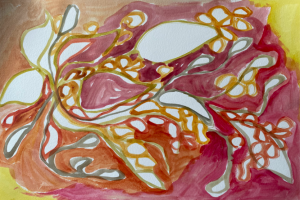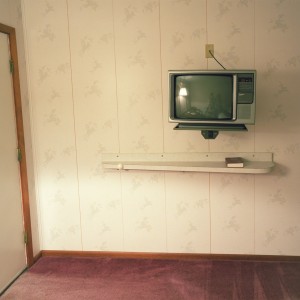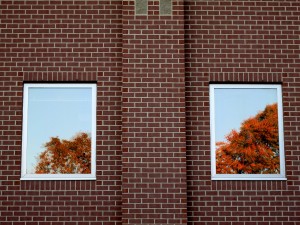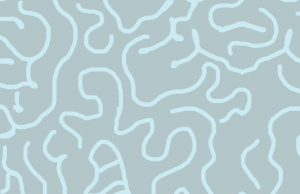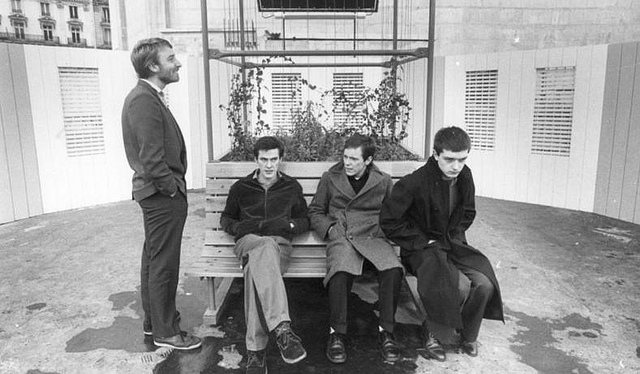
Requiem for the Simulation Generation
by Harrison Fannon | April 20, 2017
‘Watched from the wings as the scenes were replaying’
The fatalistic lyrics from Joy Division’s Decades couldn’t have been more appropriate. The clementine hegemon was stood atop the rostra in Washington, regurgitating sound bites on a bleak mid-winter day. I was reduced to a slumped spectator, frozen in melancholic passivity watching an elaborate performance unfurl before my eyes. And most of the world was in attendance too, in one way or another, watching from the wings as the scenes were replaying. We were ignorant of how the appearance had come into being. Ignorant of the reality it concealed. I became convinced by the nauseating feeling that the entirety of life is some sort of pre-scripted film, with me just a part of its languid audience.
To be a spectator, writes philosopher Jacques Rancière, is to be separated from both the capacity to know and the power to act. And it is exactly this sentiment that I believe characterises what it means to grow up in the early twenty-first century in Britain. There is a widespread dejection and dissatisfaction with the nature of our society. Simultaneously, there is a sense of collective impotence, a feeling that we are peddling towards an intolerable future, yet we cannot find a way of obstructing its inevitability—as if simply watching from the wings. In a thespian irony, our protests seem only to provide a carnivalesque background noise to the unchanging domination of the theatre that surrounds us. Politics has been replaced by a reality TV show and we have become incapable of distinguishing this simulation of reality from reality itself. And it’s not just in politics—our daily lives are a constant mediation between the real and the fake. Our online profiles to which we have tended to since our early teen years have become so integral to our existence that the line between the virtual and the real is now totally blurred. And we have grown sick because of it. Mental illness has increased some seventy per cent amongst adolescents and suicide remains one of the most common sources of death in young males. And what is treated is merely serotonin imbalance, from which big pharma cashed in £285m in 2015. But this pathological approach to depression immediately forecloses any possibility of making it a political issue, and any question of a systemic social cause is overlooked.
But perhaps it is a depression that politicians would not understand, because they were not born in this time, but are merely passing through it. It is a time, to paraphrase Francis Fukuyama, at the end of history—a time in which a metaphysical faith in the progress and perfectibility of humankind has ostensibly been stunted. Where the future seems to be leading ominously to a dead end of artificial intelligence and human solipsism. It is a depression that senses a world at our fingertips yet one that is incomprehensible and distant. It is a depression that culminates in the inability to do anything other than pursue pleasure in a digitalised and ephemeral world and yet be crippled by the aching anxiety that always, something is missing.
Despite living in a so-called “post-truth” world, it’s not truth that is now suddenly missing. We have never had truth, maybe a greater transparency and reliance on empirical fact, but never absolute truth. It must be something more tangible that’s missing, something that has been lost in a digital world of transient images. We seem to pine for a realness that exists in the materiality of the past. Indeed, it can be seen in modern popular culture, which appears to be locked in a state of retrospection, heavily relying on the reproduction of styles and forms of previous times. Music critic Simon Reynolds in his book Retromania, points to the success of the nostalgia industry with its revivals, reunions and remakes to claim that there has never been a culture so obsessed with its own immediate past. It’s as if a feeling of displacement in the digital age has triggered a nostalgic yearning for our analogue history. A history in which authenticity was concealed within the granulated haze of a film photograph, or the quintessential crackle of the needle falling on a record. A past that challenged the sleek, logical and mass-produced modernist aesthetic with a sense of character that is idiosyncratic and perceivably vulnerable to the processes of nature. An ideal of beauty more attuned to the imperfection and impermanence of our own human condition.
More so, we wallow in a melancholic attachment to an authenticity concealed in our own social past. A past before friends and memories were uploaded to become forever frozen in the ether of the virtual realm—where they were real, temporary and vivid. But now, ironically, it is human communication itself that has been besieged by the technological age we are now in. Only seven per cent of meaning is communicated verbally—the remaining ninety-three is contained in non-verbal cues (eye contact, body language etc.). The majority of meaning in online conversations is thus absent, and in turn we are at danger of losing an intuitive connection or closeness in our real relationships. If we continue to prioritise digital forms of communication, we risk becoming the generation that was swallowed up by the internet and spat out as autistic solipsists, stranded on islands of misunderstanding.
But what of art? How can art save the soul of humanity from falling headlong into the abyss of cyberspace? If artists are to be the gatekeepers of truth, to quote Paul Robeson, what role can they have in a post-truth world? Art has to somehow invoke the real underlying the fake reality which is presented to us. I asked artist Simon Tyszko why he thought that culture currently seems incapable of artistic innovation and relies so heavily on the styles and forms of the past. He responded with the bleak conclusion that because the present is so inauthentic it becomes impossible to represent what does not actually exist. The hyperreal chimera has become so convincing, he asserts, that one grasps for it, yet like a hologram, it is not there. It is as if our consciousness has become so severed between the real and the fake, that we have become incapable of artistically representing ourselves in this time, in this place. And so a generational angst is left, mostly unarticulated, festering in the soul of youth culture. Ultimately art needs to challenge what it means to view art. Viewing can also be an action, where one observes, selects and compares images to be refashioned in their own way. It is when we cease to be passive spectators and become active interpreters of our reality that we may begin to unhinge the fake spectacle that surrounds us.
Whether it was Beat, Punk, Grunge or whatever has invariably sprung from the young, modern, creative soul to rupture the fabric of everyday life, it has always been movements which brought young people who imagined a new vision for the future together. Depression and anxiety weighs down so heavily on our generation because we have never teetered on such a weak ontological footing—one foot is placed in reality and the other in a digital simulacrum. But if we begin to replace the dominant social platforms online that are fundamentally solipsistic by getting together in public spaces, face-to-face, exposing one another to ideas that may challenge our prejudices, we may rediscover a collective imagination that has been lost. Maybe then we will remember that the future does belong to us, and it exists in our potential to create our own institutions, our own culture and our own truths.
Photo credit: flickr
